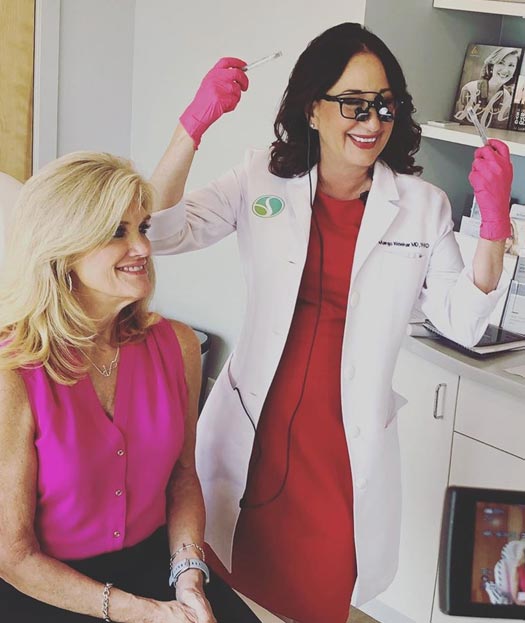Sofwave is here! Plus: Try Something New Summer Sale LEARN MORE
- About
- Cosmetic
- Conditions
- Injectables
- Lasers
- Skin Rejuvenation
- Signature Treatments
- Medical
- Gallery
- SHOP
- Contact us
- Book Now
There are many factors that can be attributed to excessive sweating. As a dermatologist, Dr. Weishar distinguishes between the two types of hyperhidrosis – primary and secondary, to ensure that your hyperhidrosis treatment is specific to the cause thereof.
Primary focal hyperhidrosis is a medical condition characterized by excessive sweating on certain parts of the body, such as the hands, feet, underarms and head. Unlike other forms of excessive sweating, primary focal hyperhidrosis is not caused by another medical condition or medication side-effect. It tends to affect both sides of the body equally (in a “symmetric” pattern), and usually produces more sweat in specific “focal areas”. For example, people with sweaty palms often have concurrent excessive sweating in their feet as well. It usually begins in childhood or adolescence.
Secondary generalized hyperhidrosis is a type of excessive sweating that is caused by an underlying medical condition, or by taking certain medications. As its name implies, the hallmark of secondary hyperhidrosis is generalized sweating on multiple areas of the body, including the face, chest and back. It can also be accompanied by night sweats while sleeping.
Before we can treat excessive sweating, we first need to determine whether you are suffering from focal hyperhidrosis or generalized hyperhidrosis. This will guide your excessive sweating treatment plan and treatment may include some of the following recommendations:
Dr. Weishar’s commitment to excellence has earned her numerous awards from leading industry organizations including the Philadelphia Top Doctors Award 2022. She is also frequently sought after as an expert instructor for teaching advanced techniques within the cosmetic surgery field.
As a result of her dedication and hard work, Dr. Weishar is recognized as one of the nation’s top aesthetic dermatologists. She always has her patients’ best interest at heart and looks forward to helping you find the best long-term solution to your excessive sweating. Book your appointment at her Philadelphia office today.

Certain types of treatments can help manage symptoms and reduce the amount of sweating. These treatments include prescription medications, antiperspirants, injections of Botox for hyperhidrosis, and certain types of hyperhidrosis surgery.
Excessive sweating can signify an underlying medical condition such as diabetes, thyroid disorders, infections, or hormonal imbalances. It can also be caused by stress or anxiety. Sometimes it can be caused by taking certain medications or due to an underlying neurological disorder.
Hyperhidrosis can be caused by either genetics or lifestyle factors. In some cases, it can occur based on environmental triggers as well as hormones and body chemistry. If someone has a family history of excessive sweating they may be more likely to suffer from it themselves.
The best antiperspirant for excessive sweating is one that contains aluminum chloride hexahydrate as the active ingredient. This type of antiperspirant blocks sweat ducts and reduces the amount of sweat produced by your body.